Interview – Milena Zdravkovic: concept artist, art director, producer
Author: Natasa Dinic
Concept Artists for film help bring director’s ideas and visions to life with their artwork.
We had a great pleasure to interview film concept artist veteran Milena Zdravkovic, the Serbian born, based in Vancouver (Canada) who has worked on multiple Hollywood productions such as I, Robot (2004), 2012 (2009), Mission: Impossible – Ghost Protocol (2011), RoboCop (2014), Fifty Shades of Grey (2015), Star Trek Beyond (2016), Predator (2018), Bad Times at the El Royale (2018), Godzilla: King of the Monsters (2019), Lost in Space (2019)and recently and most notably the fourth installment of a groundbreaking The Matrix anthology.
Milena, now when you look back: when did you know that art is your medium?
Thinking about it now, I realize that artistic expression predates any other idea of self-identity. Before I even knew how to formulate who I am, the need to express and create was by far the strongest recognizable impulse that was void of usual social constructs. I think I started dancing before I learned how to walk and started singing before I knew how to talk. So, if I think really hard, I guess I instinctively knew all along. It is unapologetically still present.
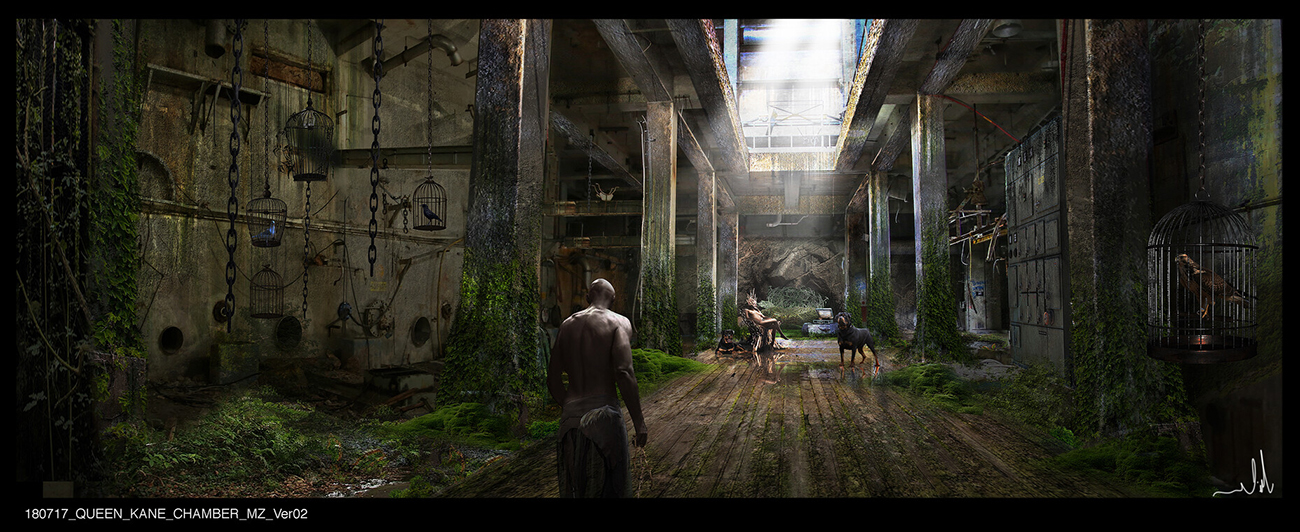
You moved to Canada as an architect. Your academic strengths were mathematics. You’re also a dancer. How do you manage all these powerful forces within you?
I wouldn’t say mathematics was really my strength per se. At least not at first. If anything, it was a source of infinite anguish for a very long time. All I wanted was to express myself thru dance which was creating number of obstacles in my formal education, including my ever so complicated relationship with math. But it all started to change with geometry. I remember clearly, it felt like a massive lightbulb switched on in my head. Geometry was wonderful, it made sense to me and numbers in relationship to geometric forms finally had meaning. I guess it was all that spatial awareness, just like in dance, that felt completely natural to me.
And that was it. That was the end of my war with math and the beginning of a lifelong appreciation for it.
However, my true passion continued to be dance, and the only form out there uniting my love of dance and my love of geometry was Architecture.
So, I went on to study Architecture at the University of Belgrade and continued to dance, trying to find balance between the stage life and learning how to design.
Could you share any milestones from your life that marked your path from the architect to professional concept artist, illustrator, set designer, art director, producer?
As much as I loved an idea of Architecture, the true life of an architect was never really all that exciting to me, unless you are Frank Gehrys or Zaha Hadids of the world, which I’m obviously not. As the matter of fact, I really never thought I would work as an Architect, though I really tried on several occasion. I also had way too many other equally important interests. My mother would call them distractions. And just like Architecture was once a very logical solution, that was later film. It was almost inevitable. So, no, not any particular milestone out there, just serious of life paths that ended up twirling into this one road.
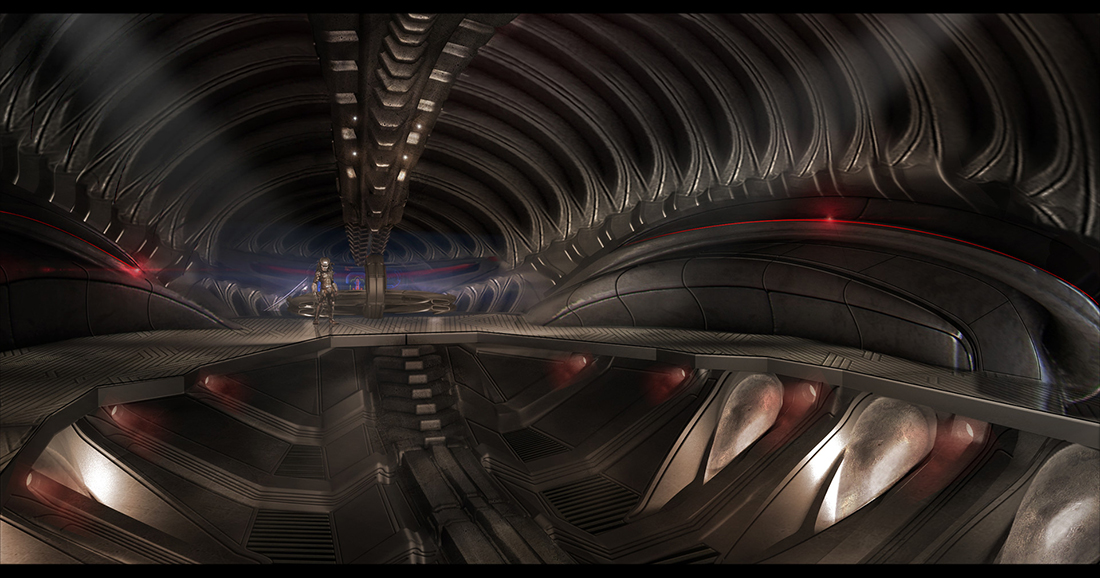
What was the first project you worked on professionally and how did you land it? Was there anything surprising, something you didn’t expect?
My first project was a TV series called Level 9. How I landed it, well, I was lucky, it was very busy in town back then in 1999 and they needed people.
It was exhilarating, stimulating and also frightening. They asked me if I knew how to draw on a computer and I said yes, though I haven’t touched any of those drafting programs for good 4 years. Long story short, they gave me this program, Vector Works and asked me to draw spiral stairs. I found 2 tools – a line and an eraser and drew those stairs like I was doing it on paper, but I managed to finish them in couple of hours, which granted me the right to come back to work on Monday. That night on my way home, I’ve got tutorial books and literally spend 48 hours straight learning how to use this thing. By the end of next week, I was building the entire fuselage of a jet plane in 3d. Needless to say, I felt like my brain was dripping down my ears, but I did it because I felt this was it, this was where I truly belonged.
In regards to surprising things, and things that you didn’t expect, well, that happens every day on a film set. Things are fluid and are constantly changing.
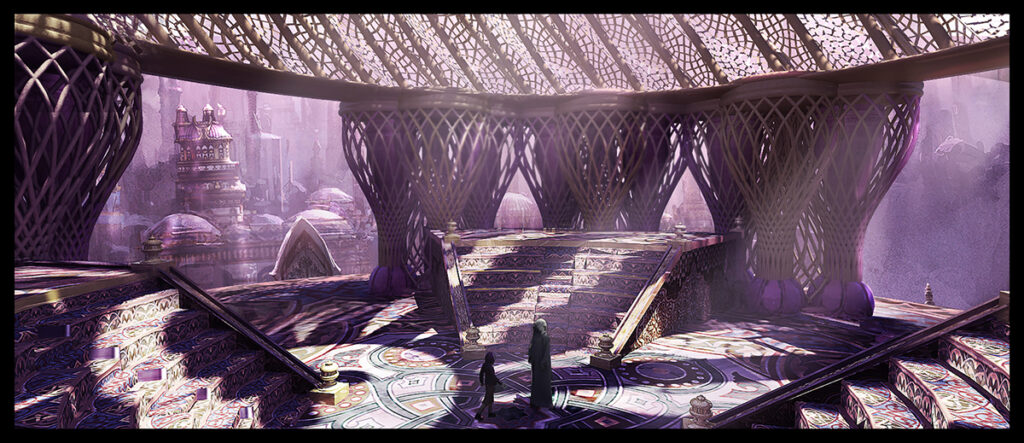
What is the difference between working on TV series and movies?
There aren’t really all that different, especially these days when TV has large budgets, but I’d say the biggest difference is in the pace of work. Movies typically move slower and pay more attention to detail (well, some do), while TV is more fast paced. Movies have one script to work off of, while TV series have 6 or 12 or 24 episodic scripts so the turnaround can be insane at times because you are practically shooting 6 or 12 or 24 little movies in the same amount of time.
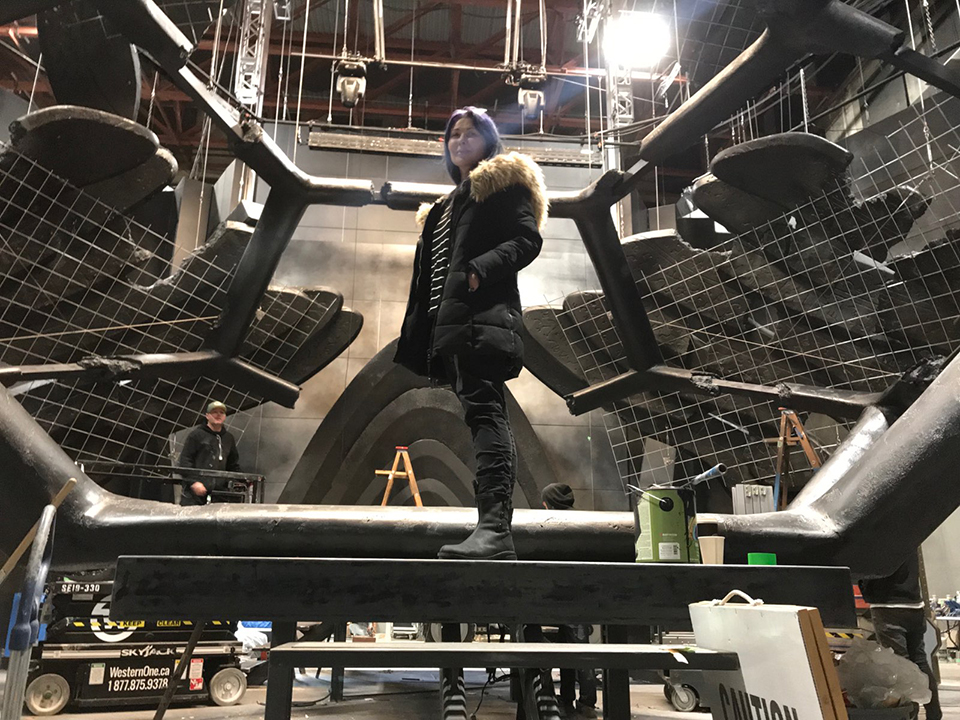
Photo: Milena’s personal photo archive
Could you walk through a typical day of yours as an artist… What are some common tasks or challenges that you sometimes need to solve?
I’m a commercial artist so the output is strongly connected with the needs of a client, which in this case is a movie production. There are deadlines, so one has to develop a strong discipline to meet all of the pressing demands and agility to change things on a dime. That means you have to set up the project with that in mind from early on in the process. You don’t have the luxury to get too emotionally attached to the piece since it constantly evolves and there are usually many, many versions.
I tend to wake up very early in the morning and spend couple of hours just thinking about how to approach solving a visual problem at stake. Once I work it out in my head, it’s relatively easy to put it down on “paper” or, in my case in digital form. But in reality, I never stop working, even if I’m not in front of the computer. Sometimes even during the sleep.
Creativity and working as a concept artist (illustrator, designer…) in a film industry… How much freedom an artist has while working on the film?
That mostly relies on a relationship with the boss whomever that might be in any given time – most of the time I follow cues from the Production Designer, sometimes it’s from the director, but at the end of the day, it’s a team effort and the work has relatively clear guidelines based on the script. We are all here to support the story. In some occasions, and depending on a Production Designers style, I get to present completely individual ideas of how I think things should look and from which Production Designer chooses the paths. But even with all of the already established parameters, there is an ample amount of individual freedoms that are wildly encouraged and mandatory. It’s kind of like – here is a vase, draw it – but choose the angle, the color, the shape etc. At the end of the day, it’s still a vase, but it’s seen thru your eyes.
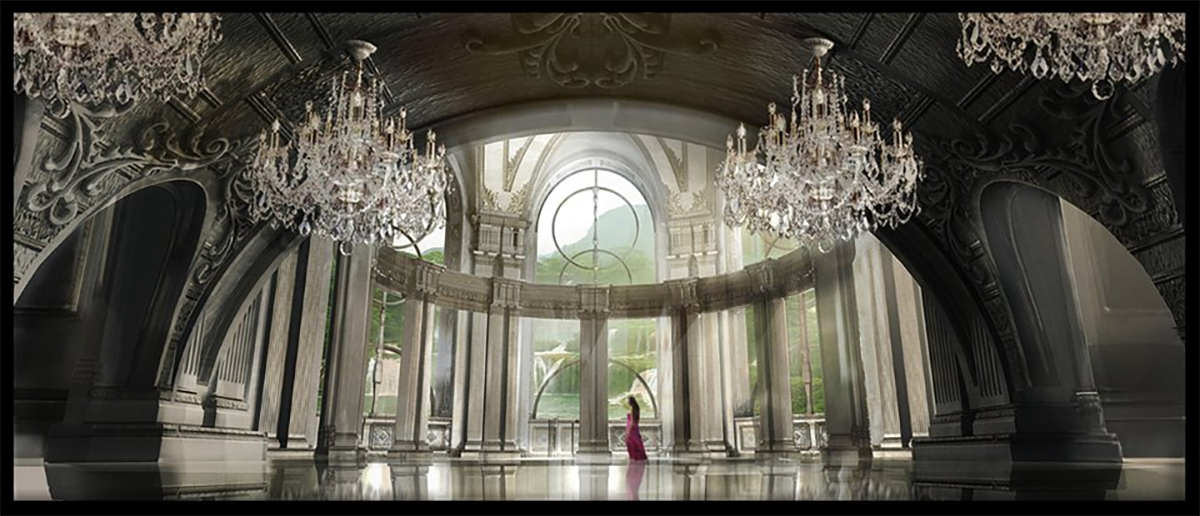
Is there a specific type of art that you enjoy working the most (characters, environments etc.)?
Since my background is Architecture, I am mainly specialized in environments. But I do enjoy designing everything that they throw at me, given it be a costume, or a prop or a completely unknown micro or macro worlds.
You are a notable illustrator in the film community often working on not one but several projects simultaneously. How do you manage all that work?
It is hard at times but it also gives me an opportunity to change gear and look at things through different lenses. There were times I would simultaneously work on SCI-FI ship for one production and abandoned Victorian mansion on the other. It’s fun, it definitely keeps me on my toes. Timing is also very important so I’d have to stagger work and overlap it perfectly so I maintain all of the deadlines. There are no weekends nor evenings. But that also mean less time to get into trouble!
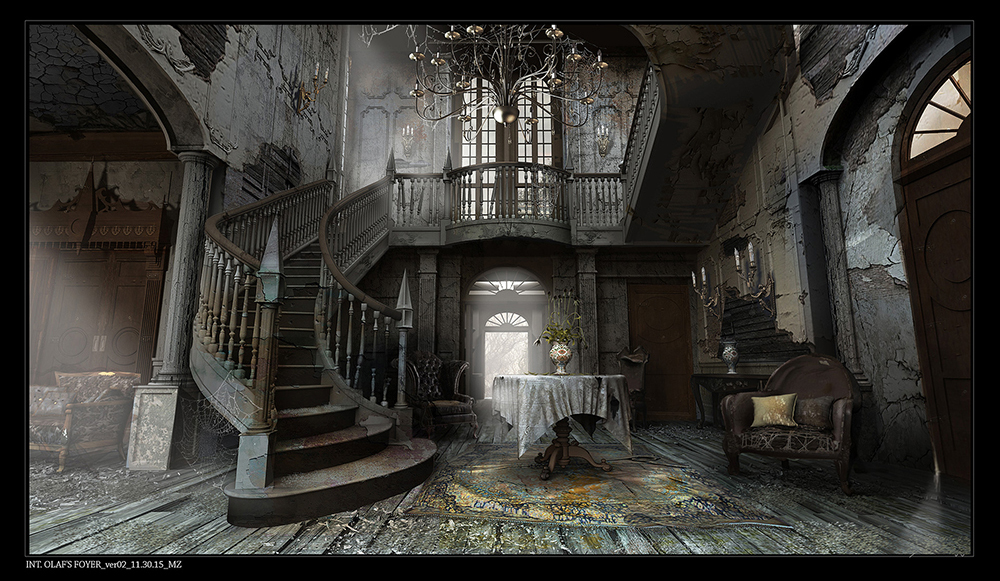
You have worked on dozens of movies. Is there any movie that is special for you?
Though there are a few of the movies that I’m proud of, one that is particularly special to me is coincidentally also the most recent one. I was invited to work on The Matrix 4 and had an opportunity to collaborate with one of the most unique and prolific directors of our time, Lana Wachowski. I am profoundly grateful for being a part of an incredible group of artists and will cherish this experience forever.
What did Matrix 4 and collaboration with such a unique screenwriter, director and producer as Lana Wachowski brought to your life? Why working on this movie is special for you?
It brought back courage. It brought back fearlessness.

Once the movie you worked on is released, how does it feel to sit and watch it?
I always have mixed emotions. First look is often too critical and subjective. It has to take quite some time for me to actually enjoy them. Sometime years.
You and your partner Warren Flanagan worked together on your own short film Metta Via (2017). Metta Via was a recipient of multiple Awards (Short Film, Films on Religion, Debut Filmmaker, Best Director, Best Editing, Best VFX Artist, Best Sound Designing and Best Music Score categories in Virgin Spring Cinefes) all over the world. Tell us more about this piece? What was your roll?
The film is Warren Flanagan’s brain child and in collaboration with his brother Paul Flanagan became a passion project that took years to produce since it was visually ambitious and at times technically impossible to do on our budget, so we had to wait for technology to catch up. I was involved from an early on building a 3D model of a set which movie takes place in, I designed and build the costume and, as the production went on, I did budgeting and financing.
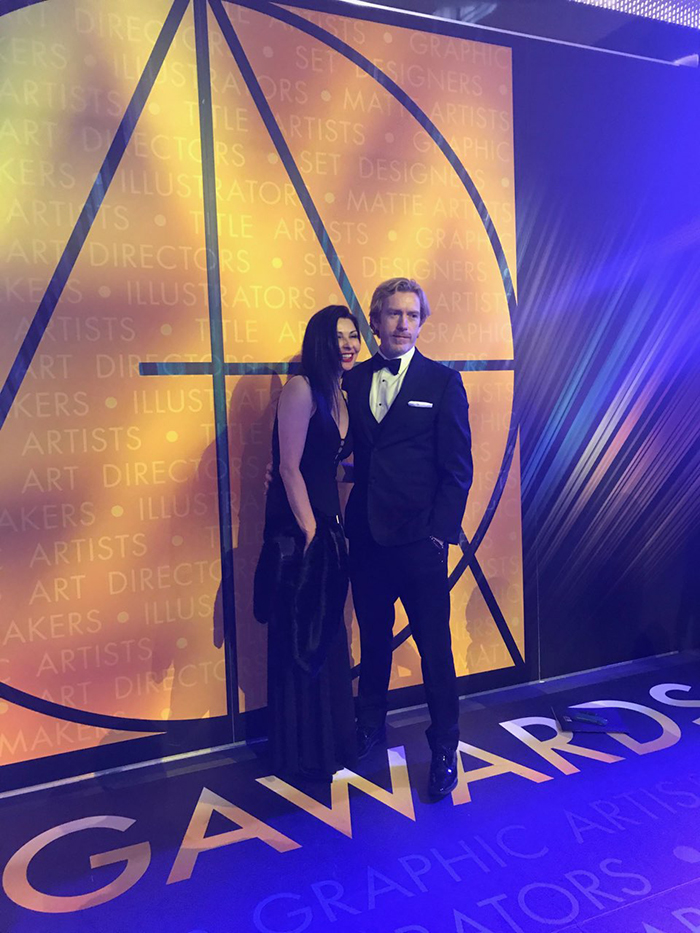
Photo: Art Directors Guild Awards, 2019
How do you find time for your own personal pieces?
I don’t. Unfortunately.
Where do you find new ideas for your personal and professional work?
Literally everywhere I look I find ideas. You start to develop a visual library in your head. Everything I see, hear, touch, feel – it all contributes to it.
Who are the artists that inspired you?
Martha Graham, Tamara de Lempicka, Gaudi, Albrecht Dürer, Sylvie Guillem, Zaha Hadid, Ridley Scott
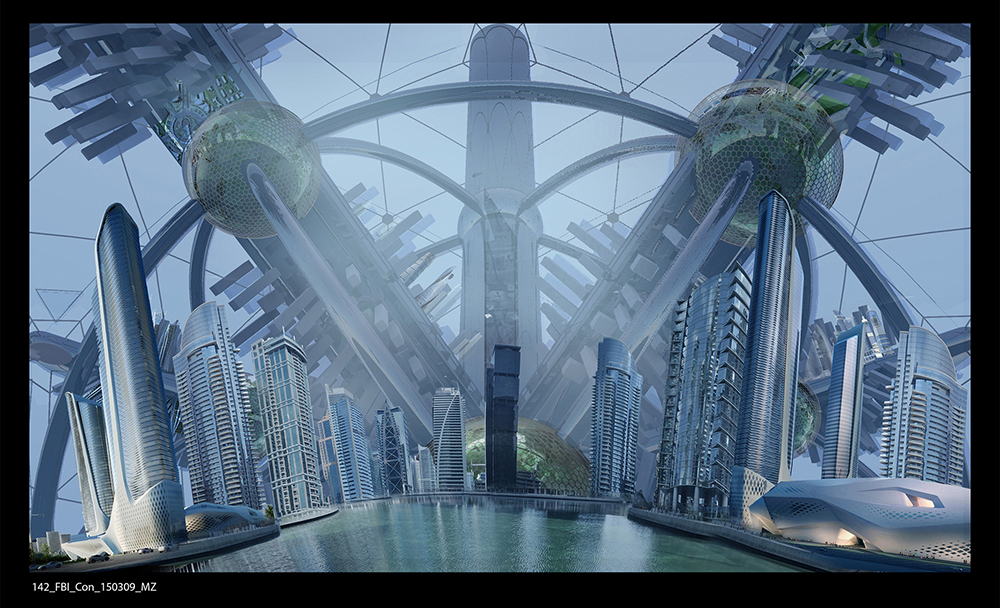
While preparing for this interview corona virus pandemic happened. In which direction the concept art industry will go now? Your thoughts…
Concept art industry lived this way anyways, we mostly work from home and are isolated, so not much has changed in the way we live our lives. However, how this will change the way movies are made is a whole other story. They are developing some strict guidelines as we speak, but hopefully they will have to implement them soon for the next foreseeable future before we go back to some normalcy. Hopefully we don’t forget what that is.
What would be your advice to the young artists who would love to work on film?
Honor deadlines, learn from your peers, don’t get too emotionally attached to your work because it’s not “your” work, it belongs to the movie. Be patient. It’ll come. Not every illustration has to be a masterpiece. Your job is to translate an idea into a visual language, so find shortcuts, bend backwards, do whatever you need to – as long as your piece catches that idea.
Aside from your work what else do you enjoy doing?
I started dancing again last year, so that definitely makes me very happy. I love writing and I am contemplating what will be the next project I could do. I’m thinking about a few documentary ideas I’d like to tackle at some point but it will have to wait until it gets safe to travel again.
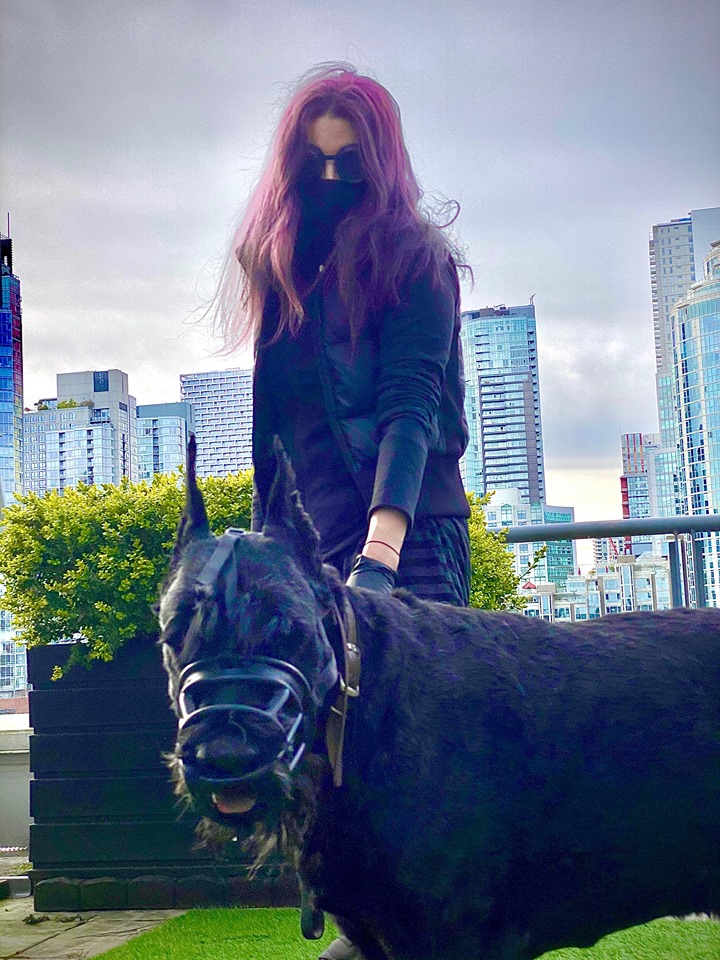
Photo: Milena’s personal photo archive
What is your cradle?
Family and friends.
Dear Milena, thank you for this amazing interview.
The Cradle Magazine wish you all the best in your personal and professional life.


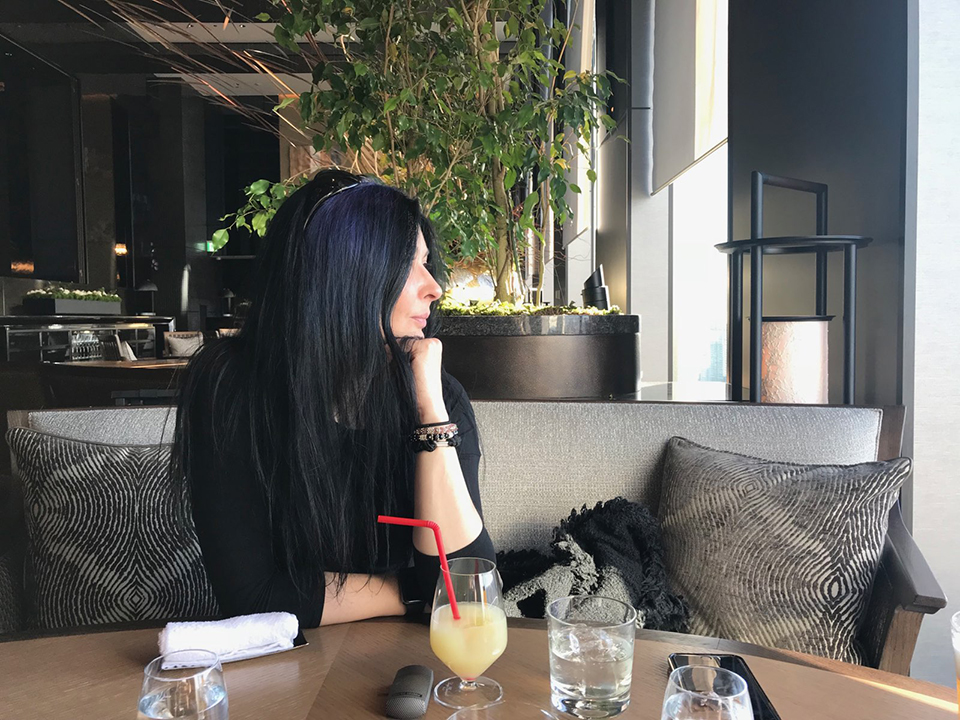
Congratulations Milena It’s so funny how we didn’t see each other on every show we worked almost every show together